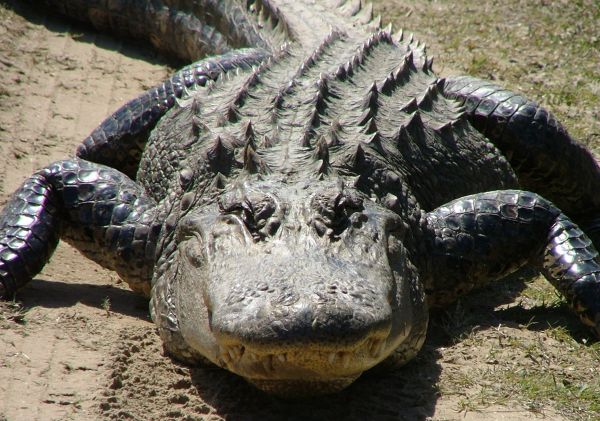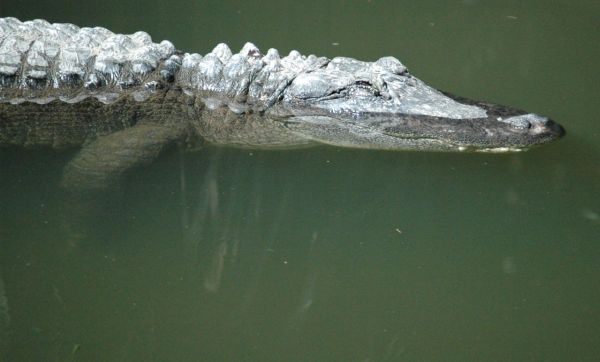Wildlife North America . com North American Animals - mamals, birds, reptiles, insects |
American Alligator (Alligator mississipiensis)
American Alligator, Cape Romain National Wildlife Refuge, South Carolina Photograph by Ginger L. Corbin, US Fish and Wildlife Service. License: Public Domain. (view image details) 
American Alligator, Houston Zoo, Texas. Photograph by Lisa Dugger. Some rights reserved. (view image details)
AMERICAN ALLIGATOR FACTS
DescriptionThe American Alligator is a large reptile with a slightly rounded body, sturdy limbs, a broad head, and powerful tail. Adults are dark green, or brown in colour. Juveniles are black with yellow crossbands. The tail is used for propelling it through the water, and also can be used in defense. They can move rapidly in the water and are usually slow moving on land, although they can lunge quickly. They front feet have five claws, and the rear feet have four claws. Size Length: males 4m - 4.5m; females 3m. Weight: males 450kg; females 70kg Environment wetlands, rivers, lakes, ponds, mangrove swamps Food Alligators eat fish, birds, turtles, snakes, mammals, amphibians. Hatchlings eat fish and invertebrates such as insects, snails, spiders, worms. Breeding The female lays 20 to 50 white eggs in a nest made of vegetation, sticks, leaves, and mud near the water. The incubation temperature determines the sex of the hatchlings - eggs incubated at 32.2–33.8 °C hatch as males; those in temperatures 27.7–30 °C hatch as females. In between temperatures gives a mix of males and females. The female guards the nest and digs the young out when eggs hatch after 65 days of incubation. Range found in North Carolina, South Carolina, Georgia, Florida, Alabama, Mississippi, Arkansas, Louisiana, Texas, Oklahoma. Notes Alligators are dangerous reptiles, and quite capable of killing humans. There have been about 400 fatal attacks in the United States since 1948, with the vast majority of these in Florida. They are also capable of inflicting injury by lashing out with their strong tail. Classification
Home | Mammals | Reptiles | Birds | Insects | Privacy Policy | Disclaimer | Contact Us |